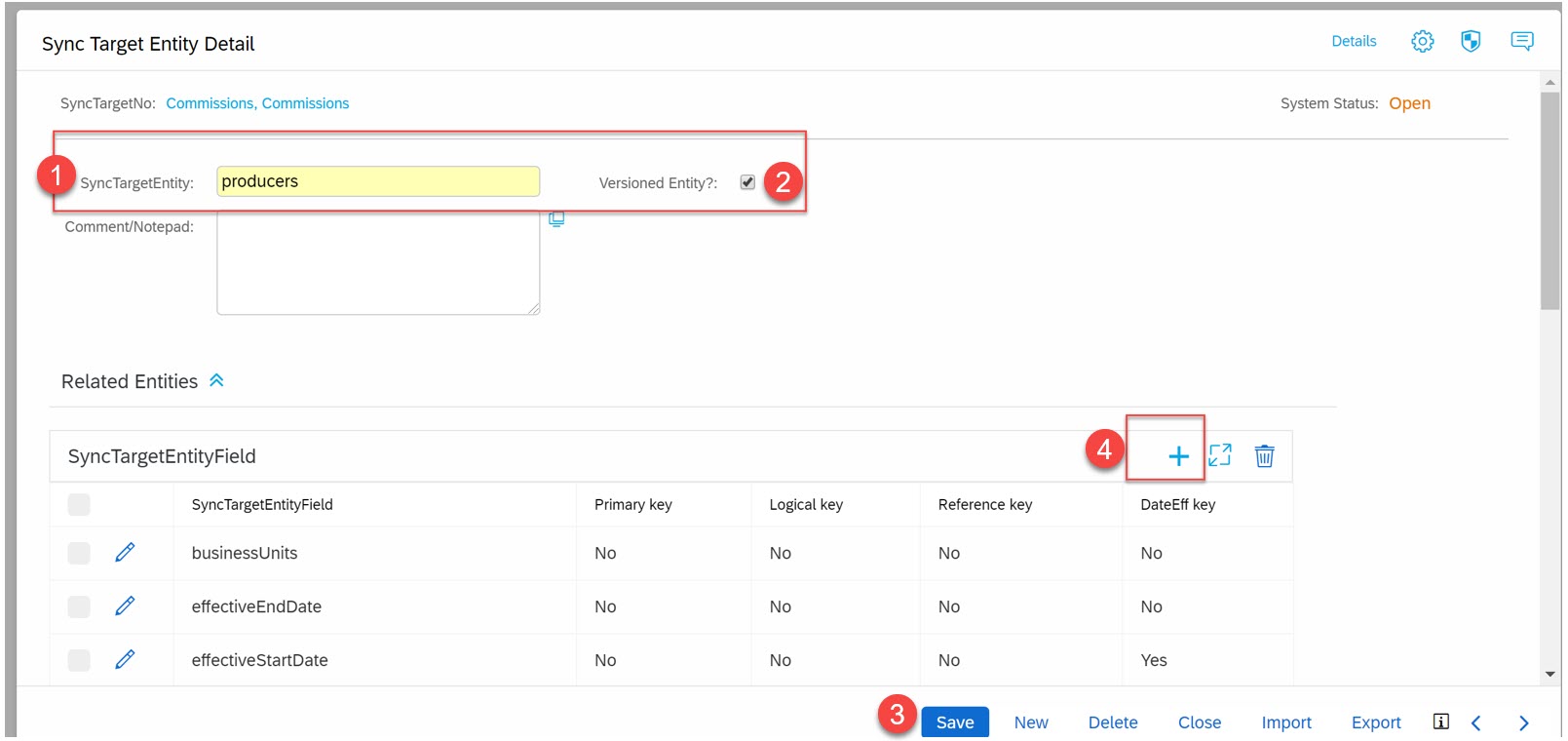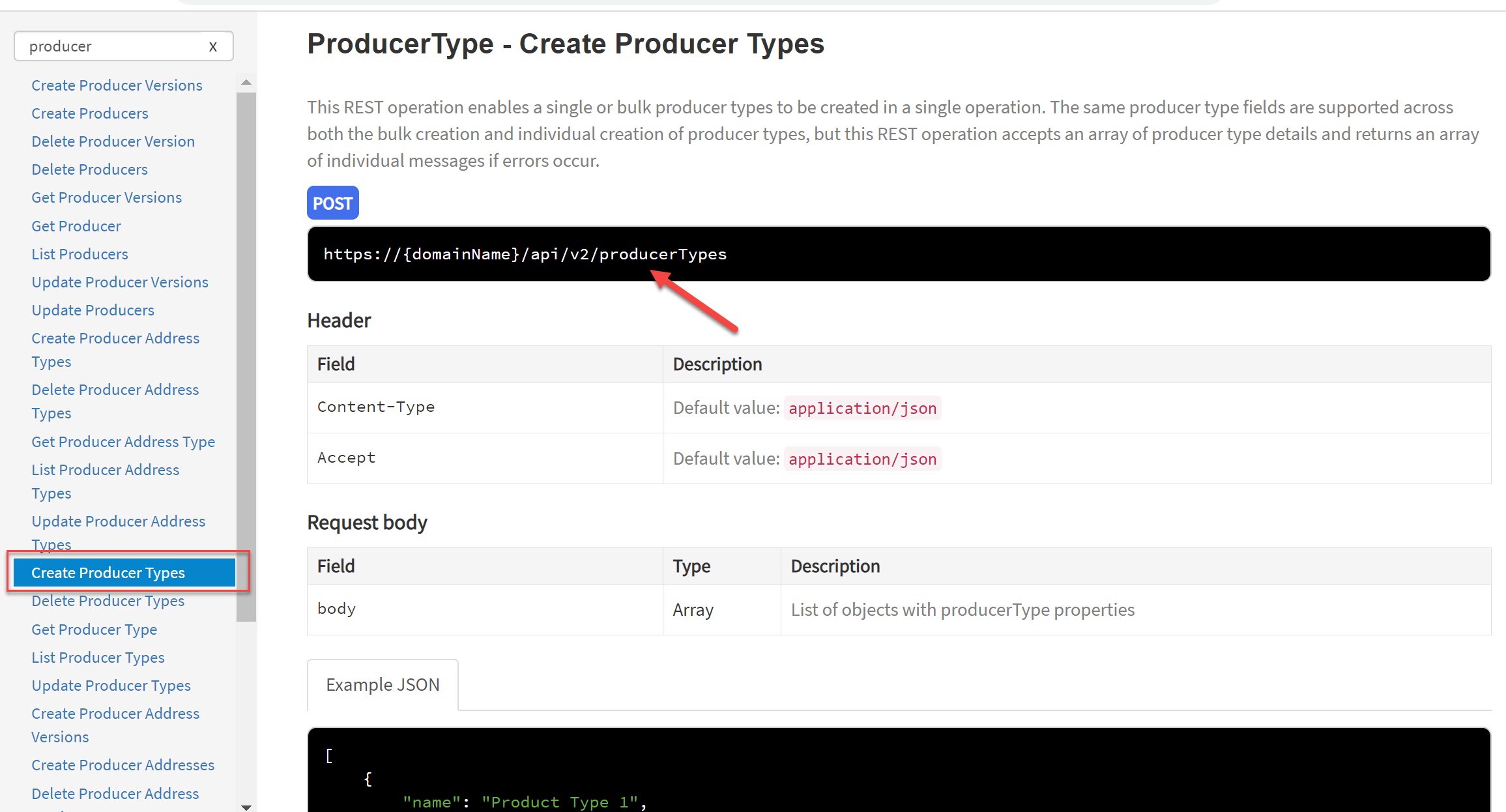
- SAP Community
- Products and Technology
- Human Capital Management
- HCM Blogs by SAP
- APM(ProducerPro) API Sync to SAP Commissions – Par...
Human Capital Management Blogs by SAP
Get insider info on SAP SuccessFactors HCM suite for core HR and payroll, time and attendance, talent management, employee experience management, and more in this SAP blog.
Turn on suggestions
Auto-suggest helps you quickly narrow down your search results by suggesting possible matches as you type.
Showing results for
Product and Topic Expert
Options
- Subscribe to RSS Feed
- Mark as New
- Mark as Read
- Bookmark
- Subscribe
- Printer Friendly Page
- Report Inappropriate Content
08-31-2020
8:39 AM
Dear All,
In the previous article Part 2, we completed to setup Database view.
Let’s continue to create Sync TargetEntity for Producers, Contracts and Contract Hierarchy.
The next step is to define and configure the target system (Commissions) entities. For this section of the configuration please refer to the Commissions API documentation.
Under the SyncTargetEntity section click the "+" symbol on top of the header to add a new SyncTargetEntity and then fill out the following details:
New form will pop out to fill the required fields as per below steps
Step1:
SyncTargetEntity: This should be the name of the API end point for the entity you plan to sync to. For example according to the Commissions API documentation above the end point to create and update producer data is called "producers" as indicated in screenshot below:
Step2:
VersiondEntity: If the Producer Manager entity is versions (for example ProducerVer) then check the box.
Step3:
Click the Save button.
Step4:
Once the form is saved you should see a SyncTargetEntityField section.
Click the "+" symbol to define the individual fields on this Commissions entity end point.

SyncTargetEntityField: The name of the field as indicated in the API documentation. In the example above the field names are indicated in the first column: payeeId, firstName,lastName, etc.
PrimaryKey: This is the primary key for the entity in the Commissions system. In the documentation above (payeeSeq) this is the field that has the description of "..unique Id of ..." Please check this box if the field you are configuring is the primary key.
LogicalKey: The logical key(s) will be the combination of fields that make each record in the Commissions table unique. In the example above this would be producerId because this field is a unique field for each producer record and cannot be repeated on another record. Therefore this is the logical key. Logical keys can be one field or a combination of fields. If the field you are configuring is part of the logical key then check this box.
DateEffKey: This is the field for a versioned Commissions entity that indicates the effective start date. Typically this field in Commissions will be the effectiveStartDate. If the field you are configuring is the effective start date then check this box.
ReferenceKey: A reference field in Commissions is any field that is a reference to another entity (or in other words is a foreign key).
List of field names are as below and its case sensitive.

How to enable Producer Types and Status Code ?
If Tenant is provisioned with Channel Management , follow below steps in sequence
New tenants for HANA customers, follow the RestAPI Method to create Producer Types and Status code.
API for Status Code Creation
In-order to work PM-SYNC Process, there should be an entry in CS_InstalledProduct with TPRO
Thanks to below users who helped to identify above point.
ajitkpanda kameshwar.nukala saurabhkatoch
In the previous article Part 2, we completed to setup Database view.
Let’s continue to create Sync TargetEntity for Producers, Contracts and Contract Hierarchy.
Create SyncTargetEntity
The next step is to define and configure the target system (Commissions) entities. For this section of the configuration please refer to the Commissions API documentation.
Under the SyncTargetEntity section click the "+" symbol on top of the header to add a new SyncTargetEntity and then fill out the following details:

New form will pop out to fill the required fields as per below steps

Step1:
SyncTargetEntity: This should be the name of the API end point for the entity you plan to sync to. For example according to the Commissions API documentation above the end point to create and update producer data is called "producers" as indicated in screenshot below:
Step2:
VersiondEntity: If the Producer Manager entity is versions (for example ProducerVer) then check the box.
Step3:
Click the Save button.
Step4:
Once the form is saved you should see a SyncTargetEntityField section.
Click the "+" symbol to define the individual fields on this Commissions entity end point.
The field definitions can also be found in the Commissions API documentation as well. Populate the following details for each entity field: Refer below example for detailed.

SyncTargetEntityField: The name of the field as indicated in the API documentation. In the example above the field names are indicated in the first column: payeeId, firstName,lastName, etc.
PrimaryKey: This is the primary key for the entity in the Commissions system. In the documentation above (payeeSeq) this is the field that has the description of "..unique Id of ..." Please check this box if the field you are configuring is the primary key.
LogicalKey: The logical key(s) will be the combination of fields that make each record in the Commissions table unique. In the example above this would be producerId because this field is a unique field for each producer record and cannot be repeated on another record. Therefore this is the logical key. Logical keys can be one field or a combination of fields. If the field you are configuring is part of the logical key then check this box.
DateEffKey: This is the field for a versioned Commissions entity that indicates the effective start date. Typically this field in Commissions will be the effectiveStartDate. If the field you are configuring is the effective start date then check this box.
ReferenceKey: A reference field in Commissions is any field that is a reference to another entity (or in other words is a foreign key).

| SyncTargetEntityNo | SyncTargetEntityField | Primary Key | Logical Key | Reference Key | DateEff Key |
| producers | payeeId | Yes | |||
| businessUnits | |||||
| effectiveStartDate | Yes | ||||
| effectiveEndDate | |||||
| firstName | |||||
| lastName | |||||
| hireDate | |||||
| taxId | |||||
| terminationDate | |||||
| payeeSeq | Yes | ||||
| prefix | |||||
| userId | |||||
| producerType | Yes | ||||
| statusCode | Yes | ||||
| genericAttribute1 | |||||
| genericBoolean1 | |||||
| genericDate1 | |||||
| genericNumber1 |
List of field names are as below and its case sensitive.

How to enable Producer Types and Status Code ?
If Tenant is provisioned with Channel Management , follow below steps in sequence

New tenants for HANA customers, follow the RestAPI Method to create Producer Types and Status code.

API for Status Code Creation

Important Note :
In-order to work PM-SYNC Process, there should be an entry in CS_InstalledProduct with TPRO
Thanks to below users who helped to identify above point.
ajitkpanda kameshwar.nukala saurabhkatoch
Labels:
You must be a registered user to add a comment. If you've already registered, sign in. Otherwise, register and sign in.
Labels in this area
-
1H 2023 Product Release
3 -
2H 2023 Product Release
3 -
Business Trends
104 -
Business Trends
5 -
Cross-Products
13 -
Event Information
75 -
Event Information
9 -
Events
5 -
Expert Insights
26 -
Expert Insights
22 -
Feature Highlights
16 -
Hot Topics
20 -
Innovation Alert
8 -
Leadership Insights
4 -
Life at SAP
67 -
Life at SAP
1 -
Product Advisory
5 -
Product Updates
499 -
Product Updates
44 -
Release
6 -
Technology Updates
408 -
Technology Updates
12
Related Content
- Speeding up your SAP HCM move to the cloud in 2024 - Part 2: Customer Evolution Kit for HCM in Human Capital Management Blogs by SAP
- 1H 2024 Release Highlights of SAP Best Practices for SAP SuccessFactors Time Management in Human Capital Management Blogs by SAP
- 1H 2024 - KM18020 - Create Same-Level Position in Human Capital Management Q&A
- Release Testing Strategies and Best Practices in Agent Performance Management (APM) in Human Capital Management Blogs by SAP
- Sending Email notifications for Time Valuation Alerts in Human Capital Management Blogs by SAP
Top kudoed authors
| User | Count |
|---|---|
| 4 | |
| 2 | |
| 2 | |
| 1 | |
| 1 | |
| 1 | |
| 1 | |
| 1 | |
| 1 | |
| 1 |